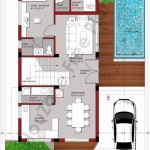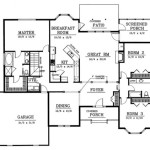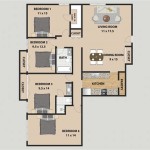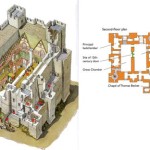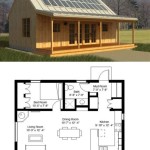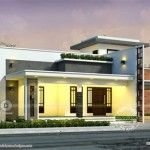Understanding the Essence of Don Gardner's Conceptual House Plans
Don Gardner, renowned for his groundbreaking conceptual house plans, has left an indelible mark on the architectural landscape. His designs, characterized by their thoughtful integration of function, form, and contextual sensitivity, continue to inspire architects and homeowners alike. This article delves into the essential aspects of Gardner's conceptual house plans, exploring the principles and philosophies that underpin his innovative approach.
1. Human-Centered Design
At the core of Gardner's philosophy lies a deep understanding of human needs and aspirations. His house plans prioritize livability, creating spaces that are not only aesthetically pleasing but also comfortable, functional, and supportive of the occupants' well-being. Gardner believed that homes should be a sanctuary, fostering a sense of belonging and connection between individuals and their surroundings.
2. Form Follows Function
Gardner's designs embody the principle of "form follows function." He meticulously analyzed the specific requirements of each project, ensuring that the architectural form seamlessly integrated with the functional needs of the occupants. Rooms flow effortlessly into one another, creating a coherent and efficient spatial organization that caters to the daily routines and activities of the users.
3. Integration with Nature
Gardner placed great emphasis on the relationship between architecture and the natural environment. His house plans often feature extensive use of natural light, with large windows that blur the boundaries between indoor and outdoor spaces. Gardens, patios, and courtyards are seamlessly incorporated into the design, creating a harmonious connection between the built form and its surroundings.
4. Flexibility and Adaptability
Gardner recognized the importance of flexibility in architectural design. His house plans are often conceived with the ability to adapt to changing lifestyles and needs. Modular components, movable walls, and convertible spaces allow occupants to customize their living arrangements, ensuring that their home evolves alongside their evolving circumstances.
5. Sustainability and Energy Efficiency
Sustainability was a key consideration in Gardner's designs. His house plans incorporate passive solar principles, natural ventilation, and energy-efficient materials, reducing their environmental impact and ensuring long-term comfort for the occupants. Gardner believed that architecture should not only be aesthetically pleasing but also responsible and respectful of the planet.
6. Contextual Sensitivity
Gardner's house plans are highly sensitive to the context in which they are built. He carefully considered the climate, landscape, and surrounding architecture, ensuring that his designs complement and enhance the existing environment. Gardner believed that architecture should be in harmony with its surroundings, respecting the local character and cultural traditions.
Conclusion
Don Gardner's conceptual house plans are a testament to his profound understanding of architecture as a human-centered discipline. His designs prioritize livability, functionality, and sustainability while seamlessly integrating with their natural surroundings. Gardner's principles continue to guide and inspire architects and homeowners alike, reminding us that the built environment should not only be aesthetically pleasing but also supportive of our physical, emotional, and spiritual well-being.

Tiny House Plans Cabin Home Don Gardner

Walkout Basement House Plan Rustic Home Don Gardner

Rustic House Plans One Story Home Don Gardner

Three Bedroom House Plan With Open Floor Don Gardner

Rustic Small Dream Homes House Plans Don Gardner

Two Story Craftsman Home Plans Don Gardner

Two Story Family Home For Neighborhood Lot Don Gardner

Two Story Family Home With Master Suites Don Gardner

